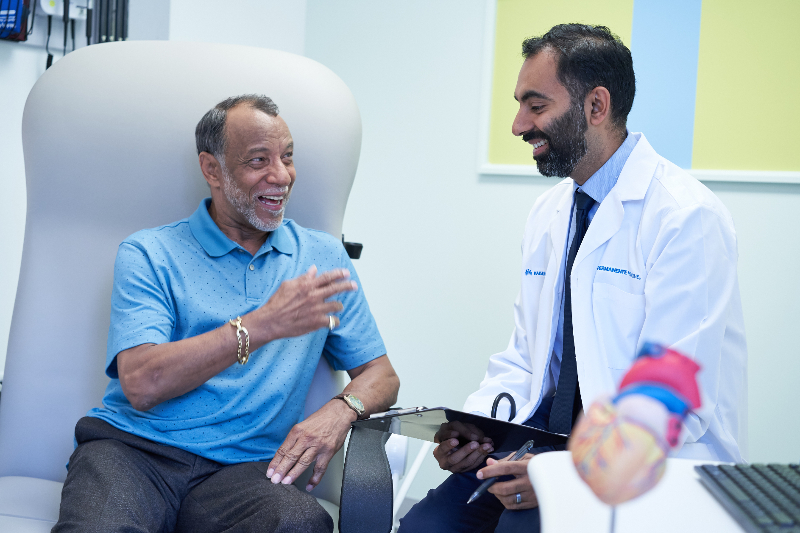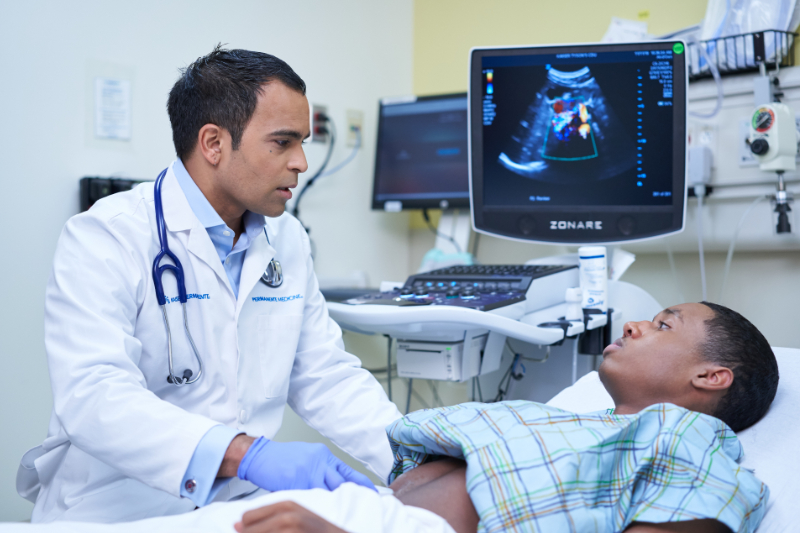The plans are among the nation’s best for quality and performance in 2023 Medicare Star Quality Ratings.

Quality time: Keeping new moms and babies safe
New Kaiser Permanente Southern California program reduces C-section rates across the region
More than 1.2 million babies are born by cesarean section each year, making this surgery one of most commonly performed in the United States. However, while C-sections can save lives when mothers or babies are at risk, the surgery has potential complications such as bleeding, additional surgery, injury, and even death.
Working together to protect their patients, Permanente physicians and clinicians safely reduced C-section rates for low-risk moms from 27% to 21% from 2016-2019 at Kaiser Permanente Southern California – well below national averages.
Cheri Lowre, MD, an obstetrician-gynecologist with Southern California Permanente Medical Group and assistant chief of Ob-Gyn at Kaiser Permanente Panorama City Medical Center, and Marianna Volodarskiy, MSN, RN, NE-BC, regional maternal child health director, explain what drove Southern California’s Perinatal Core Measure Collaborative program, why it matters, and what makes this effort uniquely Kaiser Permanente.

Q&A with Cheri Lowre, MD, and Marianna Volodarskiy, MSN, RN, NE-BC
What are the risks associated with primary cesarean?
If you have a C-section for your first birth, there’s a 90% chance you’ll have a cesarean birth for subsequent births. Your maternity journey becomes almost predestined.
Maternal risks that are higher with C-section deliveries include hemorrhage, blood clots, blood transfusions, wound infections, and readmission to the hospital. Severe complications can accompany subsequent births, and long-term pelvic pain can also be a problem. Babies delivered by C-section have a higher risk of temporary respiratory issues that require admission to the neonatal intensive care unit, and there is new evidence that they may have increased risks of asthma and obesity as well.
What steps did you take to reduce unnecessary C-sections?
Our program introduced a new, consistent standard for taking care of mothers in labor that increased the chances of vaginal delivery for low-risk mothers. This standard extended the evidence-based California Maternity Quality Care Collaborative toolkit to support vaginal delivery and reduce primary cesareans.
It had several clinical elements such as an evidence-based approach to induction of labor and educating clinicians and nurses on Fetal Heart Rate Algorithm with proper actions. Other activities included educating patients on how to cope with early labor, teaching clinicians to be patient and provide more time for mothers to labor, and building bedside nurses’ labor support skills to help patients cope and facilitate labor progression.
What about Kaiser Permanente’s integrated care model made the success possible?
In our experience, Kaiser Permanente provides the safest model for delivering care. Each member of the care team has a role to play in our integrated system. Nurses, midwives, physicians, and anesthesiologists work together in the hospital literally night and day to deliver the right care to mothers and babies.
Clinician teams are always in the hospital ready and available to take care of patients 24/7. This means there are no conflicting commitments — doctors are not coming in from home in the middle of the night and no one is worried about rushing back to the office to take care of waiting patients. We feel this is the safest model for taking care of our patients. Everyone and everything they do is focused on what is best for the patient and her baby.
How has the program benefited mothers and babies?
Thousands of women have safely avoided unnecessary C-sections since we began this effort. This not only reduces the risk of harm but actively benefits new moms and babies. For example, bonding and breastfeeding success have been shown to be easier following vaginal birth. It’s easier and often quicker to return home and be present for your other children.
There’s nothing evil about the C-section. It’s a blessing that we can do it — and do it safely. It just needs to be reserved for patients who really need it. It’s all about the right care, at the right place, and at the right time.


